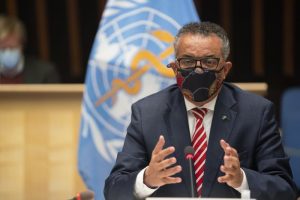If we do nothing, parts of the US will see a tripling in wildfire smoke pollution.
In the Western United States, summer 2018 was a bad time for wildfires. In all, according to the government of California, 7,948 separate fires saw 1,975,086 acres burnt to a crisp, 24,226 structures destroyed or damaged, and 100 confirmed deaths. In the following summers, things didn’t improve.
New research from a team assembled by the National Oceanic and Atmospheric Administration and various universities suggests that, if climate mitigation efforts don’t go far enough, summer wildfires will only get worse. In a worst-case scenario, the research said that the problems caused by fires in the Pacific Northwest could result in a tripling of air pollution.
“This is the pathway we want to avoid at any cost,” Meiyun Lin, one of the authors of the paper and a NOAA researcher, told Ars.
It’s getting hot in here
The team of researchers developed a statistical model that looks into interactions between the climate, the ecosystems in the region, and various socioeconomic factors including mitigation efforts. The researchers then applied this model to future fire scenarios projected by various Earth System Models.
From this, the researchers were able to look into potential future fine particulate pollution from wildfires under different mitigation scenarios. In particular, the team looked at pm2.5, or particles under 2.5 microns. “Think about a single hair falling on your hand,” Lin said, adding that, when inhaled, the hair can cause a slew of health issues—from exacerbating asthma to increasing the risk of cardiovascular disease.
The team identified three different scenarios of varying severity. In the strongest mitigation scenario, humanity reaches net-zero by 2050. Even if humans amp up their use of renewables, carbon capture, and storage tech, the pollution from wildfires will still see an uptick—though that uptick would be less severe. Lin said the pollution will only increase by between 40 and 60 percent. “This highlights the co-benefits of climate mitigation on air quality,” she said.
The team also identified an intermediate mitigation scenario. This scenario involves emissions remaining at their current levels into 2050 and reaching net-zero at the end of the century. In this case, the wildfire particulates in the region could potentially double.
In the lowest mitigation scenario, the world doubles carbon emissions by 2050—and those emissions would continue to increase throughout the century. If this happens, the region could see smoke pollution from wildfires triple by the end of the century.
Further, under this scenario, the region is likely to see extreme smoke pollution events recur every three to five years, starting later this century. The best way to avoid these fates is to keep reducing emissions. “The science is clear,” Lin said. “Global warming is caused by human activity.”




